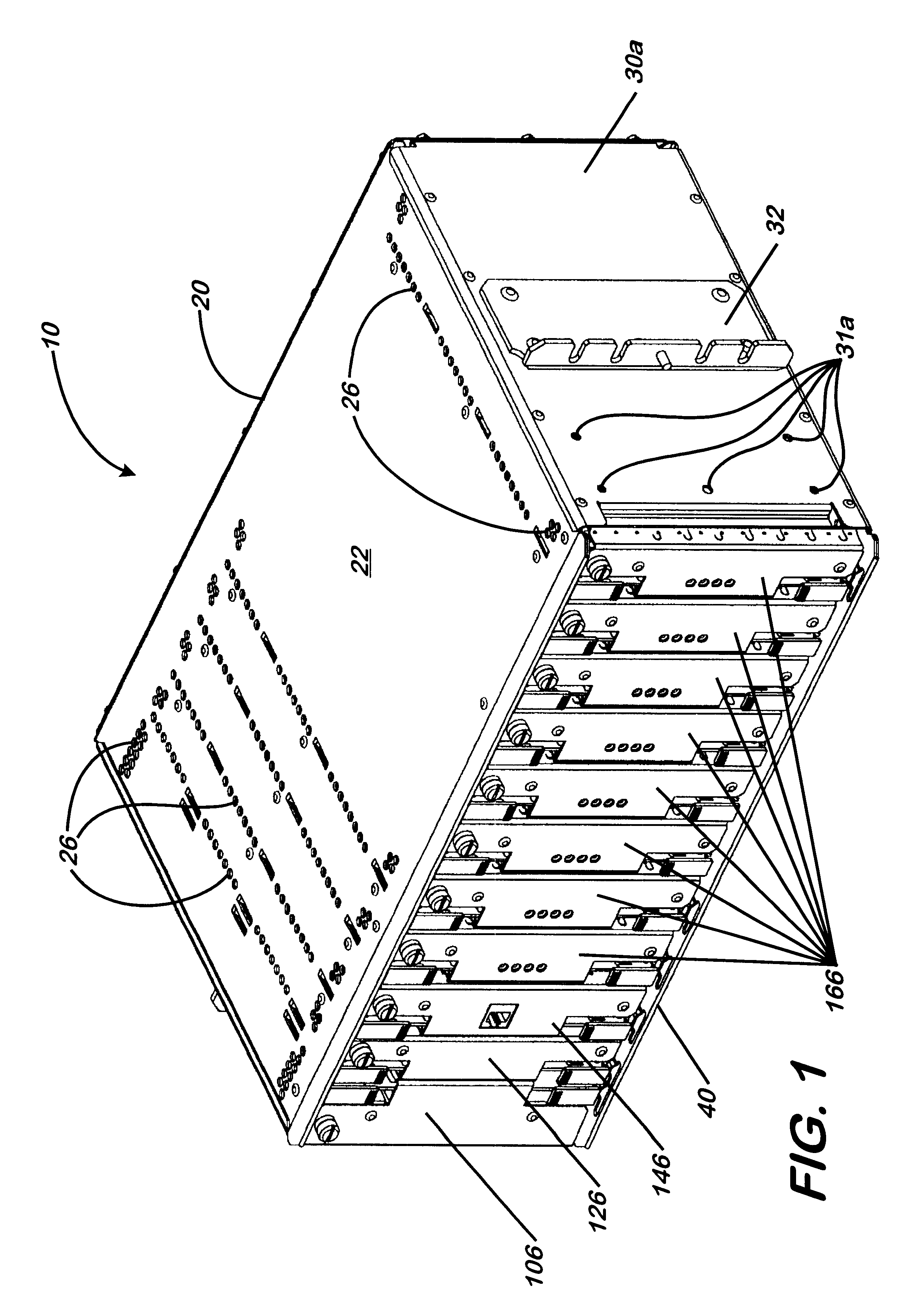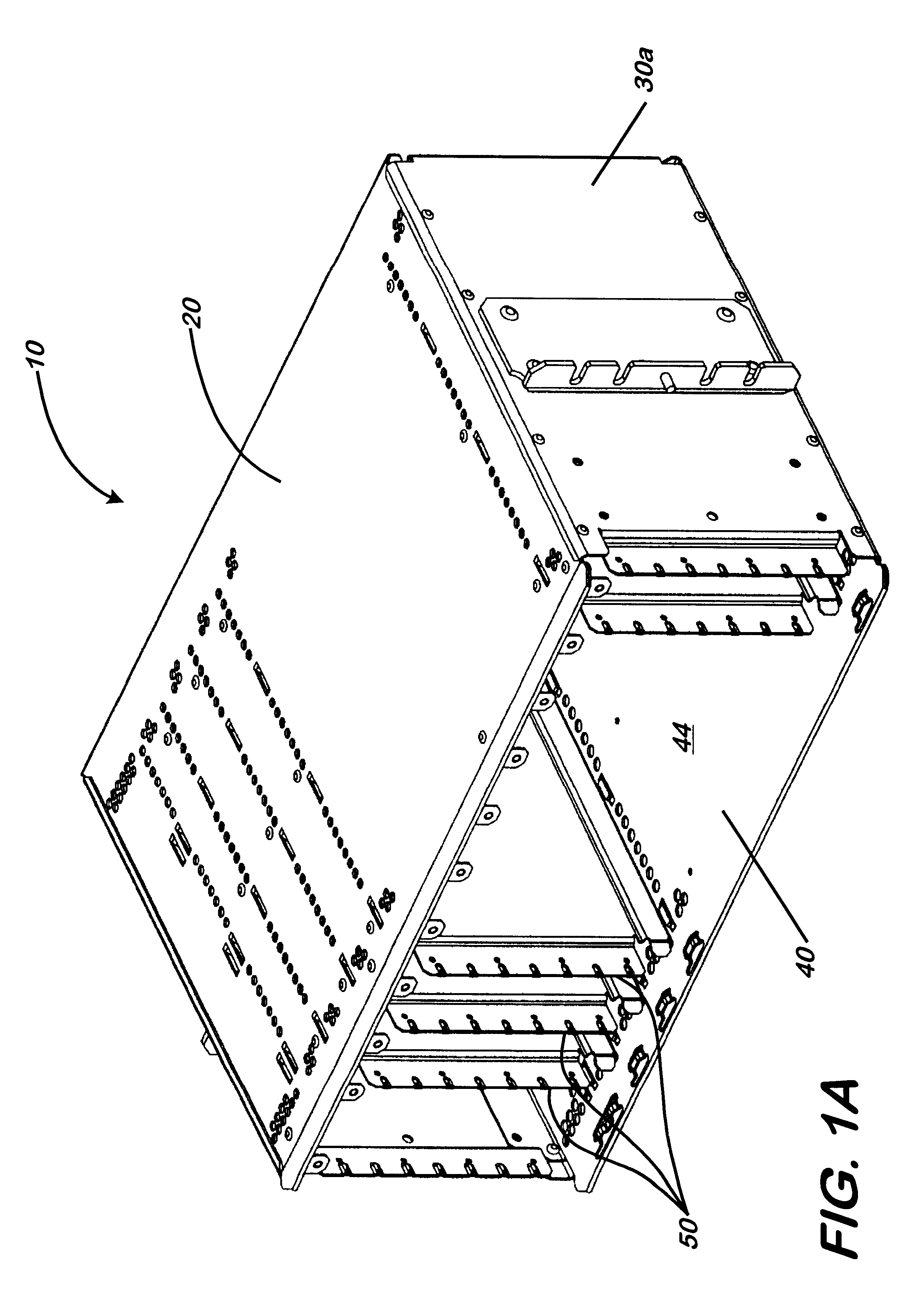Modem shelf
a modem and shelf technology, applied in the field of shelf in a relay rack, can solve the problems of low data transfer rate of current commercially available modem technology using pots, noise affecting adsl, and low data transfer rate of downstream data transfer possible with adsl, so as to preserve the integrity of high-speed data streams
- Summary
- Abstract
- Description
- Claims
- Application Information
AI Technical Summary
Benefits of technology
Problems solved by technology
Method used
Image
Examples
Embodiment Construction
The following is a detailed description of a preferred embodiment of a modem shelf according to the present invention. The modem shelf described below and shown in the drawings is but one example of a modem shelf according to the claims. Wherever possible, the same reference numbers will be used throughout the drawings to refer to the same or like parts.
FIG. 1 generally illustrates a fully assembled modem shelf 10 having circuit cards installed in the card slots defined within shelf 10. Shelf 10 could be generally described as a box divided into slots for circuit cards with appropriate connector hardware on the back side of the box. As shown in FIG. 1, shelf 10 comprises among other components, top 20, first side 30a, second side 30b (see, e.g., FIG. 3), bottom 40, back plane assembly 70 and dividers 50 (see, e.g., FIG. 1A). Top 20, sides 30a and 30b, bottom 40, back plate 72 and dividers 50 are stamped from sheet aluminum 5052-H32 about 0.040" thick. When shelf 10 is constructed of...
PUM
 Login to View More
Login to View More Abstract
Description
Claims
Application Information
 Login to View More
Login to View More - R&D
- Intellectual Property
- Life Sciences
- Materials
- Tech Scout
- Unparalleled Data Quality
- Higher Quality Content
- 60% Fewer Hallucinations
Browse by: Latest US Patents, China's latest patents, Technical Efficacy Thesaurus, Application Domain, Technology Topic, Popular Technical Reports.
© 2025 PatSnap. All rights reserved.Legal|Privacy policy|Modern Slavery Act Transparency Statement|Sitemap|About US| Contact US: help@patsnap.com



